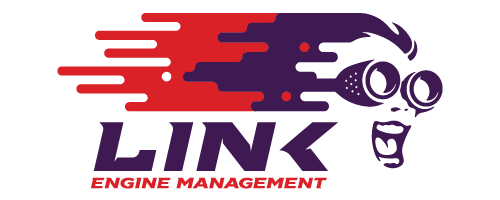Link Engine Management is a global leader in motorsport electronics and performance technology, specialising in the development, manufacture, and marketing of engine control units (ECUs) built to manage motorsport and powersport vehicles.
With a core product that was 25 years in the making, today Link’s ECUs are exported to more than 74 countries while the company remains proudly headquartered in Christchurch, New Zealand, with offices located in Australia, Spain, the UK, and the USA.

The company is also setting its sights beyond motorsports, focusing R&D on developing even more fuel-efficient engine management systems for applications ranging from passenger cars and commercial vehicles of all kinds to drones and industrial power-generation units.
We spoke with Link CEO, Andy Millard, for an update on how the company has thrived over the past year in the midst of so many global challenges, and what is planned for the year ahead…
Initially, the pandemic took us by surprise. We started to see the majority of motorsport competitions cancelled or rescheduled and obviously felt quite pessimistic. Once over the initial shock, we conducted a series of research projects to understand the changes occurring in our key markets. This research and some input from NZTE and McKinsey resulted in our decision to take an aggressive stance and “go hard”, increasing our marketing activities in key markets to take advantage of the disrupted competitive environment.
Over the preceding three years, Link invested heavily into our eCommerce platform, our website, and our four global fulfillment warehouses, which meant we could continue to service our markets through the various lockdowns. Our export destinations grew from 46 countries to 74 countries in a matter of months, as word of mouth promoted our products and had stock on the shelves.
We realised each of our export markets was moving into lockdown at different times, so we concentrated our marketing on those countries where our end-users had more time to research and purchase product. Although we had lost a good chunk of our competition market due to cancellations, the “garage project” market went through the roof, particularly in Europe and North America. Our decision not to ‘batten down the hatches” and hit the market hard paid off with our FY21 revenue growing by over 55%.
As mentioned, Link invested heavily in our digital presence and making our customers’ purchase experience easier and more streamlined. At the same time, we also concentrated on our supply chain, particularly the ability to scale our manufacturing. Before the company launched into the USA in 2017, we had a target to increase our manufacturing by 300% in less than three months, should demand be that strong. This ‘silly’ target reflected our nervousness around our entry into the US$512 Million per annum USA market. Fortunately, our growth in the US has been amazing but not an instant 300%. The new business from other countries has taken up the extra capacity.
Being a New Zealand company and manufacturing in New Zealand continues to be a competitive advantage for Link. Whilst the rest of the world has been in lockdown, sometimes for months on end, we returned to business as usual after a very short lockdown. This meant Link could continue manufacturing and distributing to our global warehouses, whilst other competitors in Australia, Europe, and the USA struggled to supply their markets. Many competitors source all or some of their products from China, and they suffered long delays. Fortunately for Link, the global air freight services continued with little disruptions, although it did come with a hefty price increase.
R&D is a constant at Link. Over three-quarters of our engineering team are involved with R&D workstreams focused on developing engine management technology for future automotive and powertrain applications. We have adapted our technology into the drone, aviation, marine, and stationary engine sectors with great success over the past few years.

Andy Millard, CEO, Link Engine Management
In a significant change in tack, Link’s engineering teams are well down the track (pun intended) in applying our technology to competitive EV racing, which, although a few years away, will become a regular amateur motorsport scene. Likewise, our senior engineers are researching the new trends in fuel cell development, particularly with hydrogen hybrids and in high-speed data transfer technology.
There has been an incredible amount of publicity and media attention towards electric cars and the electrification of the passenger fleet here in New Zealand. However, unlike New Zealand and the Scandinavian countries, most countries are not blessed with renewable, sustainable energy. Most countries still generate their electricity from fossil fuels, coal, and natural gas, so converting each countries’ passenger fleet to EVs is not a viable eco-solution.
The situation is worse for developing countries and lower socioeconomic regions in developed countries where purchasing a new EV is not an affordable proposition, despite government incentives. Link has identified an opportunity to retrofit their engine management technology into older and classic vehicles to improve their fuel efficiency and reduce the emission of greenhouse gases. This modification is at a fraction of the cost of a new vehicle and can be applied relatively quickly to the 1.3 billion gasoline and diesel passenger vehicles across the globe.
Whether used in motorsport or in the family car, all engine management systems produce massive amounts of data. Link sees the capture and analysis of this data as an opportunity to improve the performance of motorsport and standard vehicles. Likewise, this data can be processed and shared in real-time in a myriad of connected services and information sharing to improve safety, ease of travel, and energy efficiency.
The application of this data and IoT technology goes to the next level, with the introduction of semi-autonomous and autonomous vehicles in the latter part of the 2020s and beyond.
If it were simply about making money for our shareholders, then Link would have headed offshore years ago, especially our manufacturing. Pre-COVID, we regularly benchmarked our NZ manufacturing costs against contract manufacturers in other countries and found we paid a 30%-40% premium by choosing to manufacture in New Zealand. But it is not only about the money. Manufacturing in New Zealand means Link can guarantee their customers the best quality product available.
We acknowledge being a New Zealand company has special mana in overseas markets. Globally, New Zealand has a brilliant reputation for high-quality tech products and an outstanding motorsport whakapapa built on the remarkable achievements of people like Bruce McLaren, Chris Amon, Scott Dixon, John Britten, Hayden Patten, and the list goes on. Likewise, our team have a very Kiwi way of doing business with our 2,100 dealers, a very personal relationship where we call on our customers face-to-face in their businesses. It is unique in our industry.
Our company is committed to giving back to our community by generating new jobs, keeping the technology sector strong in Otautahi Christchurch, and providing a pathway for young software and hardware engineers from the University of Canterbury and ARA; it’s the least we can do. Our success comes from a unique mix of Kiwi ingenuity, agility, and tenacity, plus it’s a bloody great place to live.
Attracting new talent and skilled staff is very difficult. We have struggled at times to find the right people to join our team here in New Zealand and across our regional offices. We have worked very hard to build a supportive and positive culture, which has meant our staff retention is very high but finding the right caliber of people to support our growth has been challenging.
The company has taken a more flexible approach to the way we work, which has allowed us to access talent across the globe. COVID-19 lockdown (Version 1.0) in 2020 gave the company a crash course in managing decentralised teams. We now feel employing staff to work from home, wherever they are, is a viable option, and given international travel is so restricted, it is perhaps the only choice. Outside of the Christchurch HQ and regional offices, the company has staff based in Portland, Seattle, Barcelona, Santiago (Chile), Gothenburg (Sweden), Auckland, and Wellington.
Link also has an ongoing relationship with the engineering faculties at the University of Canterbury and ARA. Each year, the company welcomes up to four students into a paid internship. They join our team to work on special projects or with one of our teams. This investment of time and resources has meant each year we have employed one or two graduates who have interned for Link over the last few summers.
The company has been on a growth trajectory for the past five years, with a CAGR of 32%. FY21 was an outstanding year, up 55% on FY20, and very much a result of the hard work the team had put into preparing the business for growth. As already mentioned, the improvement in our digital presence, our ongoing marketing and the work to provide scalability in our supply chain, and de-risking our manufacturing capabilities all combined to provide the capability for us to take advantage of every opportunity that came our way.
This preparedness is still the basis of our growth in the coming year, although – and yet again – we are faced with the added challenges of COVID-19 Lockdown (Version 2.0) and a global electronics component shortage. We take these challenges in our stride as a team, but it creates more of a headwind than we would like. We always hope for the best and plan for the worst.
In the coming few years, we will continue our aggressive geographic expansion, establishing sales support offices and fulfillment warehouses in the Middle East, South America, and Southeast Asia. As previously mentioned, the company has a clear technology and product development pathway with some very exciting opportunities.
Our velocity on all these projects relies simply on one thing: investment. Link has achieved its success over the last six years within the restraints of its organic cash flow. Clearly, to maximise the opportunities Link has in its future, especially with the competitive environment ripe for industry consolidation, investment is required to make it happen. It would be preferable for this to come from external investment if we are to achieve our goals in reasonable timeframes.
Share this Post

